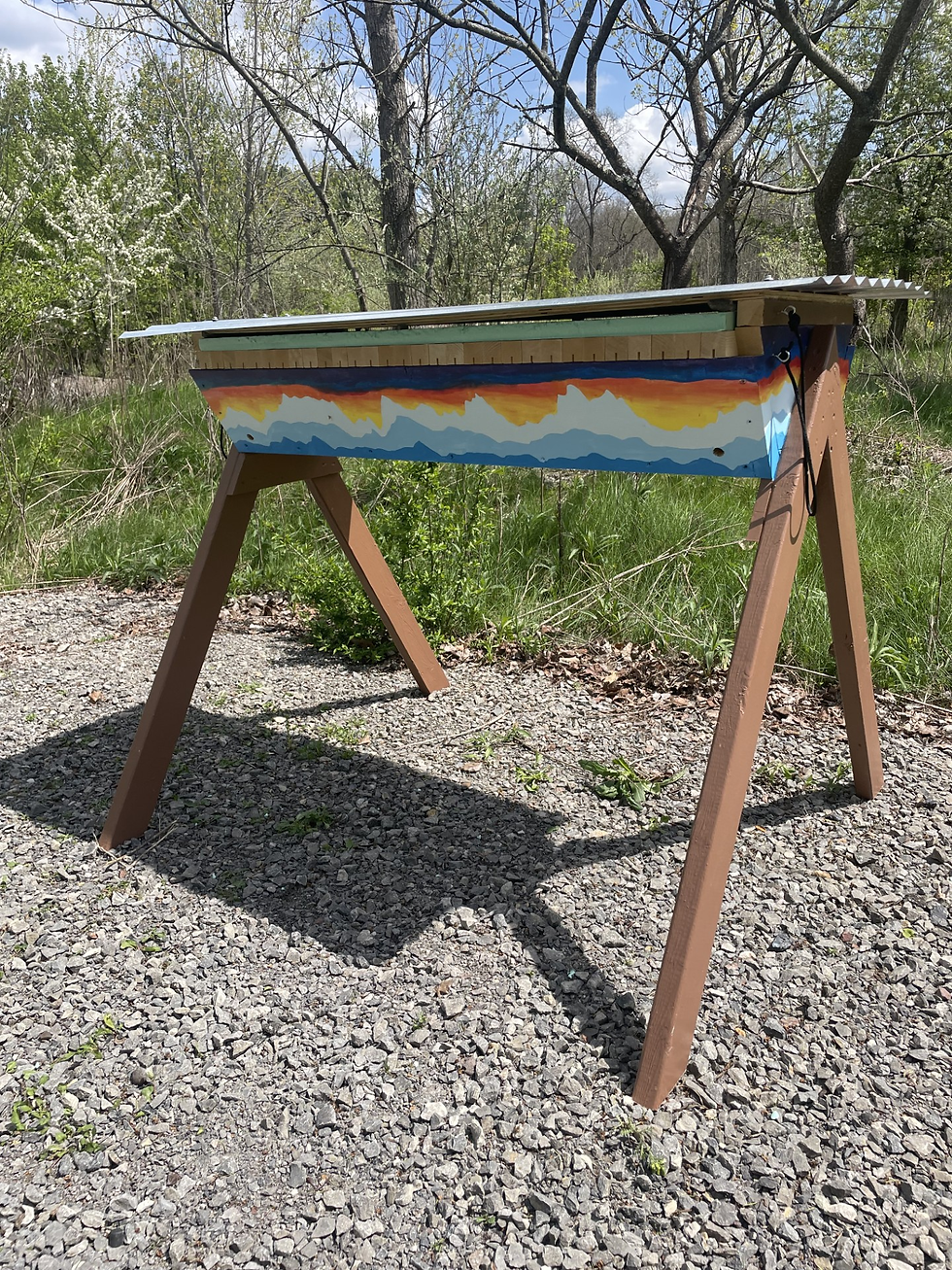The Top Bar Hive vs The Langstroth Hive
- culbertla22
- May 3, 2024
- 3 min read
Why is it that there are so many different types of honeybee hives? Sure, they look different, but are there really functional differences that separate these hives from one another? Well, for the past two semesters here at Grove City College I, Luke Culbert, have spent many hours designing and building a top bar hive so that the GCC Apiculture Research Team might be able to compare and contrast the many proclaimed pros and cons between the popular Langstroth hive and the rivaling top bar hive.
I began my research project by designing and building a top bar hive that would best suit our team and this research project. With the help from the Mr. Dan Wolfe and the GCC wood shop, we were able to build the main body of the hive, the legs of the hive, and the top bars.
As seen above, the body of the top bar hive resembles that of a trough shape, measuring roughly four feet long. The top bars (pictured on the right) sit longways across the width, running down the trough. These top bars are designed so that the honeybees can use the shims sticking out of the bars as a base to build their comb off of. In this, to avoid the walls, the comb will ideally be made in that trapezoidal shape. There are thirty top bars that can fit across this hive.
After the hive was sanded down and the screw tips were grinded down, the next step in this building process was to build a ceiling/rain cover. With the help from Mr. Mark. Calhoun and Moody Corporation, we put together a ceiling that consisted of a steel corrugated sheet of which was stabilized by a 3/4" sheet of plywood. To connect the connected steel/plywood piece to the body of the hive, we used two 2" x 4" boards cut down to 2" x 1-1/2", one for each end of the plywood. We then used hinges, screw eye hooks, and paracord to make the ceiling functional.
Once this ceiling was built and attached, fellow GCC Apiculture Research Team member Mr. Matthew VanKirk and I began to paint the hive. (See Matt's blog for more on Honeybees and Color Theory!) We used two coats of an exterior primer, followed by a color coat. Once the hive was painted, all that was left to do was to cut out a sheet of insulation that could fit underneath the plywood/steel roof and above the top bars.
At this point, we were ready to call the hive complete! Yet, the research project is far from over. Now that the GCC Apiary has a top bar hive, it is time for the comparative research to begin. Over the next year or so, the GCC Apiculture Research Team and I will be testing, studying, and analyzing this top bar hive against Langstroth hives. We will be basing our judgements/studies off of certain criteria that we have deemed to be some of the most important factors of a honeybee hive for the bees and for the convenience of the beekeepers!
We will be analyzing:
Difficulty and convenience of hive inspections
Hive customizability
Swarm potential
Honey production
Honey extraction process
Winterization capabilities
We are excited to put this top bar hive to the test and to determine the validity of the most commonly voiced beekeeper opinions in regard to both the top bar hive and the Langstroth hive.
For more information, along with specificities of the building process, feel free to reach out to Luke Culbert at culbertla22@gcc.edu!
We look forward to following through with this project and the getting results!










Comments